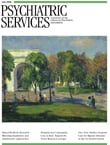In the preface of The Art and Science of Child Custody Evaluations, the authors note that the practice, scholarship, and research pertaining to child custody evaluations are in their adolescence. They note that the purpose of the volume is to define this adolescent stage and detail needed areas of growth and future development. In many regards, the authors succeed extremely well.
The book is divided into four parts, comprising 14 chapters. Part 1 offers an introduction in which the relationship between law and psychology is described, and it clearly differentiates for the reader the significant differences between forensic and clinical evaluative activities. The authors serve as eloquent advocates that all such evaluations should be conducted as forensic activities. The authors review the standards for these activities, as promulgated by the American Psychological Association and the Association of Family and Conciliation Courts.
Part 2 orients the reader to ethical issues and the methodology of conducting custody evaluations. It proceeds into a discussion of conducting forensically sound interviews of children. Part 3 addresses factors commonly assessed while conducting custody evaluations. These factors include child development, parenting, and family structure and dynamics. Part 4 addresses many of the factors or issues frequently found in families participating in these evaluations, including child sexual abuse, domestic violence, and child alienation. In this section, the authors provide the reader with a broad overview of social science research pertaining to these issues, and they offer an abundance of references and assessment measures the evaluator may find helpful. The authors conclude the book by encouraging evaluators to maintain high standards in record keeping, in appropriate use of assessment measures, and in the production of the report.
Overall, the book is a thorough overview of the present developmental stage of child custody evaluations. However, like adolescence, it is in some sections thoughtful, well organized, and comprehensive and at other times confusing and disjointed. The authors demonstrate their comprehensive knowledge of the research associated with many of the issues and factors commonly evaluated. These sections are the better-organized and thoroughly detailed chapters. However, this reviewer found the first part of the book confusing, disjointed, and repetitive as the authors struggled to meet the needs of both novices and experienced custody evaluators. Nonetheless, The Art and Science of Child Custody Evaluations serves as a valuable resource to the skilled professional while offering a thorough overview to those considering entering the family forensic field.

